1 What is Platform Engineering?
Platform engineering is presented as a product-centric craft that unifies architecture, software engineering, and delivery disciplines to build an internal engineering platform that developers use to innovate, ship, and operate software safely and quickly. Its purpose is to tame the complexity of modern development—security, governance, operations, and ever-changing technology—by offering self-service, well-abstracted capabilities that reduce cognitive load and minimize cross-team handoffs. When measured against clear business outcomes, mature platforms increase velocity, quality, and cost efficiency while improving developer satisfaction, and these benefits apply to organizations of all sizes—not just large enterprises.
Unlike tool-first DevOps adoptions that often recreate silos and bottlenecks, platform engineering treats the platform as a real product with users, roadmaps, and measurable value. It reframes how developers interact with infrastructure, security, compliance, and finance through a self-service, API-first, product experience that bakes in required controls without blocking flow. A disciplined product delivery model and domain-driven design enable the platform to scale via clear, loosely coupled boundaries, allowing independent teams to evolve capabilities while preserving a cohesive developer experience.
Seven principles shape effective platforms: everything software-defined; self-serve via APIs; evolutionary architecture; metrics-driven success; secure and compliant with shared responsibility; automated governance (e.g., compliance verified at the point of change); and deep observability. Enablers such as Developer Experience, a true DevOps culture of ownership, and SRE as a continuous reliability improvement practice amplify impact, while generative AI can accelerate work when guided by expert judgment. Organizations should introduce platform engineering as soon as strategic software initiatives emerge (and avoid broad investment if custom software isn’t core), managing trade-offs in startups and change complexity in enterprises. The chapter’s scenario illustrates the cost of fragmented pipelines and ticket-driven dependencies, and how a cohesive, self-service platform replaces friction with speed, safety, and measurable business outcomes.
Companies adopting a DevOps culture often start by enabling development teams to deploy their own infrastructure.
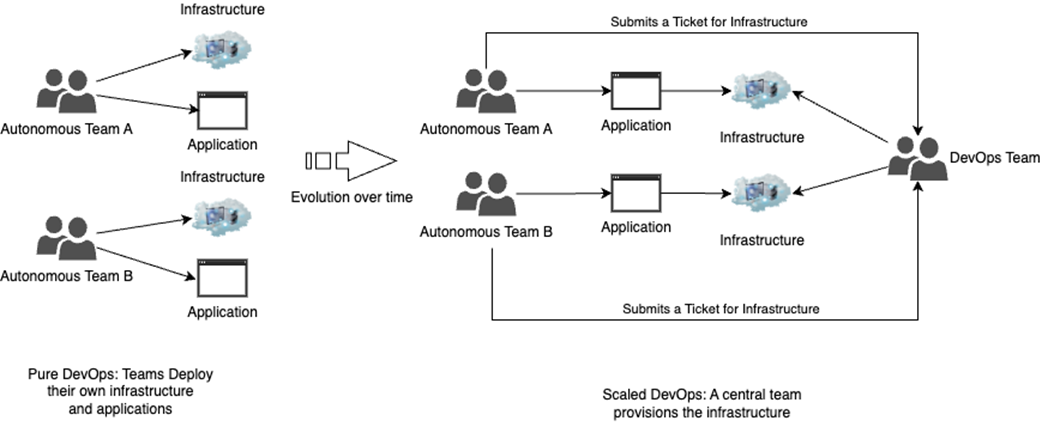
Platform engineers, working as unified product teams, build and deliver a product that provides internal development teams with the things they need to do their job.
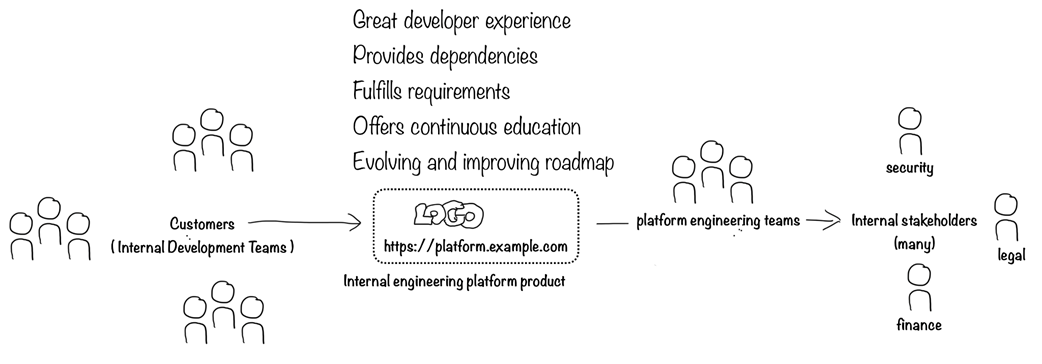
Platform engineering depends on the disciplined application of a Product Delivery Model. Product management drives decisions about the product’s capabilities, features, and experiences. Effective platform engineering principles enable us to deliver capabilities, features, and experiences more successfully. Identifying and architecting around the internal Product Domains of our platform is how we successfully sustain the user experience as the product evolves and scales.
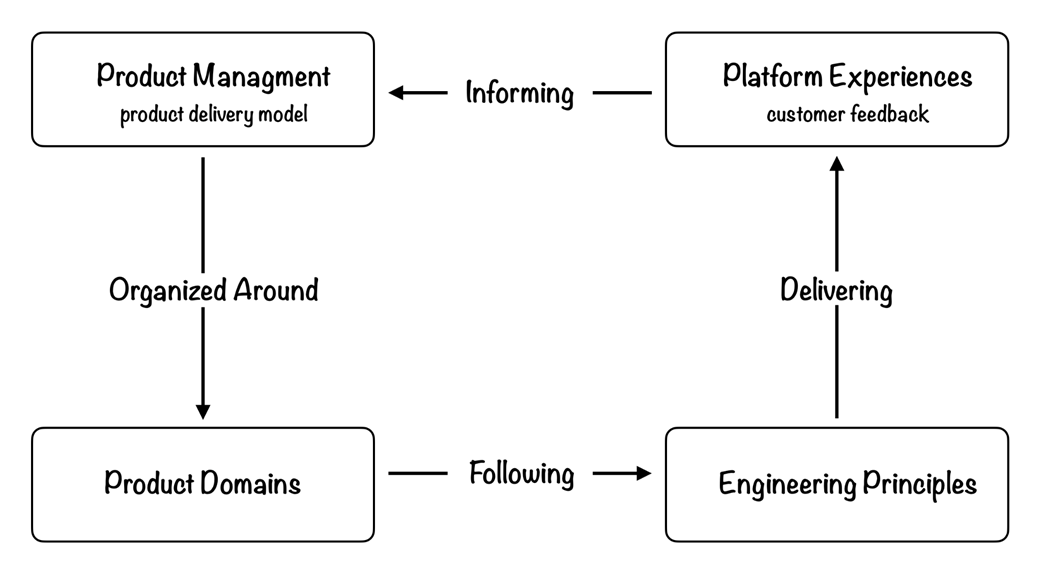
Eight principal product domains within an engineering platform. The numbers by the domain indicate an underlying dependency ordering when launching a new platform.
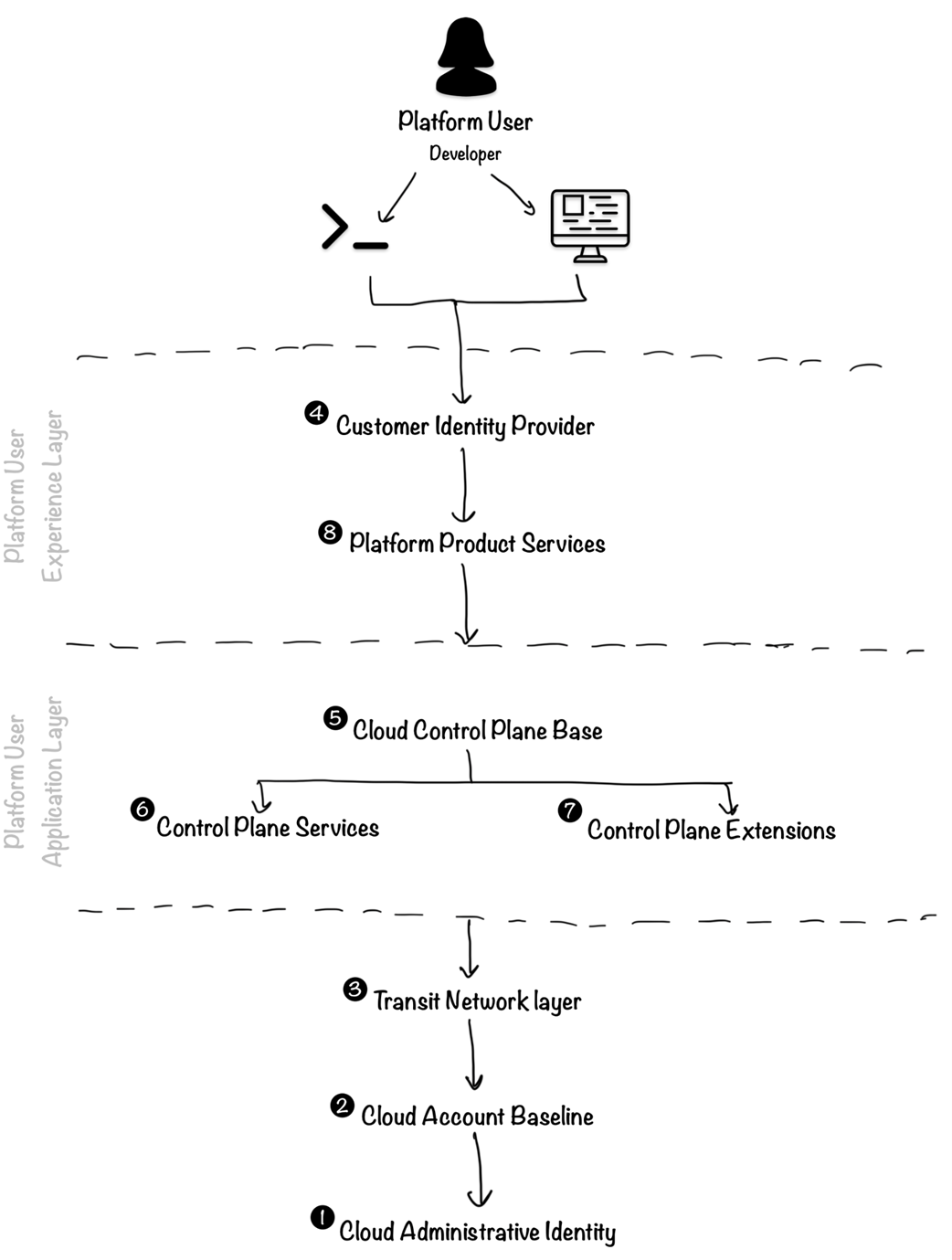
Software Defined is placed in the middle because it is a core attribute of everything the platform engineer delivers. The rest of the principles share a connection because they continuously evolve, and decisions made in applying these surrounding principles can impact the requirements of the others.
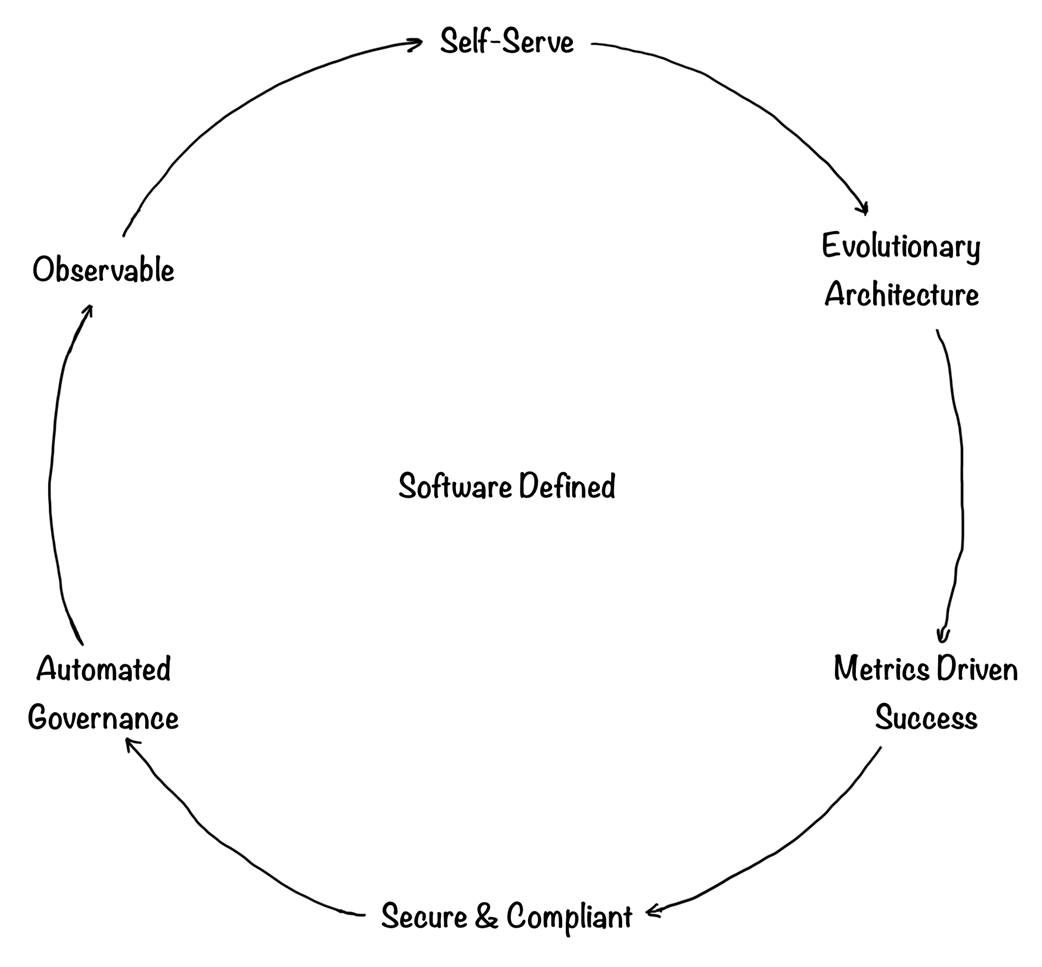
There is a direct connection between each of these enablers and the resulting quality and impact of a platform.
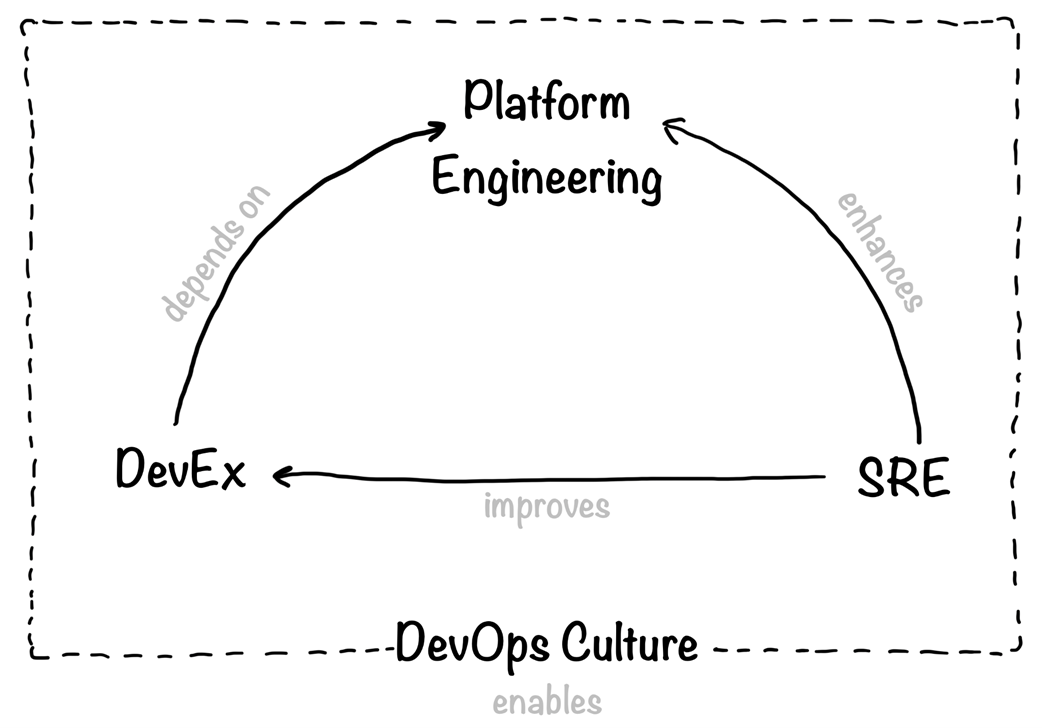
Infrastructure-oriented changes can go through as many as four handoffs by the time they reach the team that actually does the work. Each of these teams is only allowed to optimize a process within its own team’s scope of responsibilities.
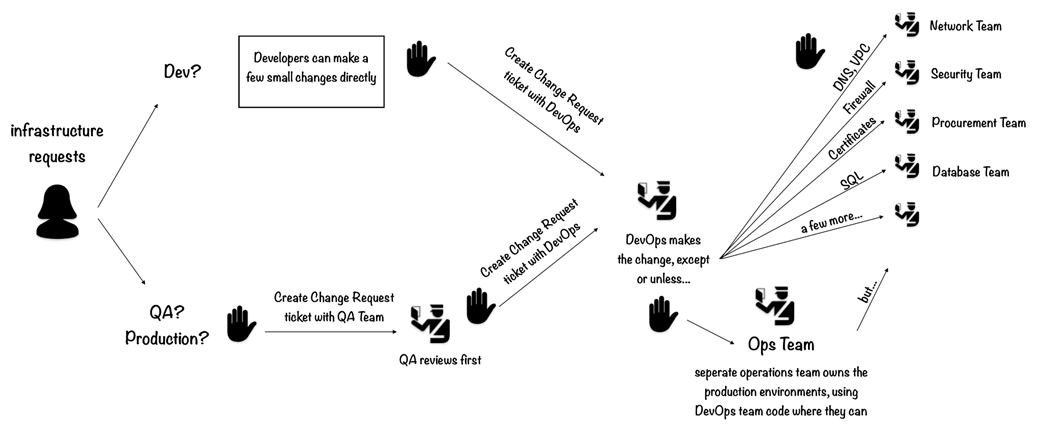
The application deployment process is fragmented, with multiple teams owning various requirements. A pipeline has been created to automate several steps, but a separate team also owns this process. A release can sometimes take weeks to complete.

Summary
- Platform Engineering is a craft composed of the architectural, engineering, and product delivery disciplines applied by dedicated engineering teams in an Engineering Platform's ideation, creation, delivery, and evolution.
- Effective platform engineering teams will work to deliver engineering platforms that provide internal software development teams with self-managed and seamless access to the tools and technologies they need to innovate, create, release, and operate their software without the usual toil, delays, and cognitive load.
- Applied well, there is significant waste that can be removed from the development lifecycle by providing developers with an effective engineering platform.
- Platform engineering principles and practices should be adopted as early as possible once an organization identifies strategic business value in custom software development.
- Platform engineering teams are software engineering teams that deliver internal products to stakeholders and users throughout the organization.
- Platform engineering requires a strategic approach with a product mindset to differentiate it from developing automation that can improve productivity.
- The development and delivery of engineering platforms should follow domain-driven design principles.
- Implemented correctly, platform engineering is neither a buzzword nor a replacement for the cultural paradigm of DevOps or the principles of Developer experience or the practice of Site reliability engineering.
- Generative AI helps identify critical areas for platform strategy improvement (planning, design, testing, etc.) and accelerates these phases through automation and prediction.
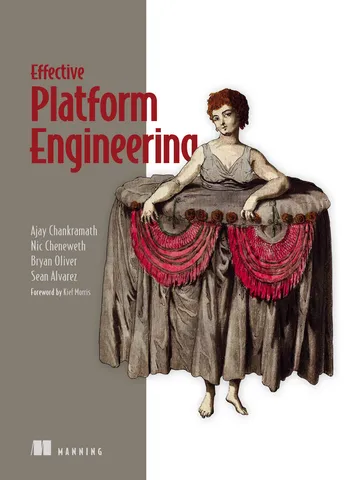 Effective Platform Engineering ebook for free
Effective Platform Engineering ebook for free